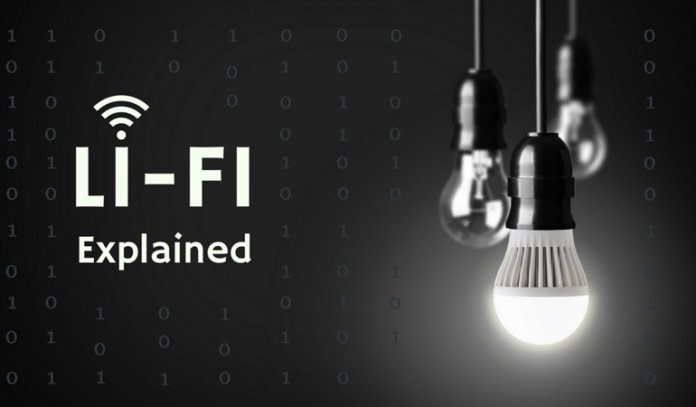Every day each of us comes into contact with a Wi-Fi network. It accompanies us everywhere: at home, in cafes, at work and even in transportation. But despite all the advantages, there is a technology that can make your Internet ten times faster. Let’s tell you about it in this article.
Contents
Imagine that this evening you decided to download your favorite movie in Full HD. But, as it turns out, “weighs” such a movie is a lot – about 30 GB, and spend a good hour of time on downloading you have no desire. So you just turn on the light in the room and the speed of your Internet as if by magic becomes faster dozens of times, and your favorite movie is downloaded in just a minute. Fantastic, will you say? It is quite possible that soon this technology will appear in every home.
Thanks to Li-Fi technology, it is already possible to transmit data using a visible light source. After all, light is known to be electromagnetic waves, and their frequency is many times higher than the frequency of radio waves on which modern Wi-Fi operates. (from 400 to 800 THz versus 2.4 and 5 GHz for Wi-Fi). Which means that Li-Fi’s data transfer rates can be dozens of times faster.
The main components of Li-Fi:
A Li-Fi transmitter system includes three main components:
- A lamp – a source of visible light;
- A high-frequency power circuit amplifier that emits the RF signal and converts it into an electric field near the lamp;
- A built-in microcontroller, which is designed to control the dimming of the lamp.
The receiver system is an LED, which is the source of the transmitted data, and a silicon photodiode capable of responding to visible light.
The data stream is encoded through the flickering of the LED lights at a rate of up to 10 million times per second, which is imperceptible to the human eye but easily detected by a photosensor located on the receiving device.
The logic is very simple. If the LED is on, the photosensor registers it as one, and when the LED is off, it registers it as zero. This is how the signals are converted into binary data, which is then processed by our gadgets and transmitted as visual information.
Scope of application of Li-Fi
The peculiarity of the propagation of light waves allows the use of Li-Fi technology where it is impossible to use Wi-Fi:
In hospitals
Radio waves cannot be used near medical diagnostic equipment, so Li-Fi is an excellent alternative there.
On airplanes
A Li-Fi-based network gives airlines several advantages. A typical in-flight Wi-Fi system, together with the antenna, weighs about 1.3 tons, while the Li-Fi version can weigh about half as much.
In addition, radio waves create electromagnetic interference that can cause malfunctions in the aircraft’s navigation equipment as well as distort ground networks. Thanks to Oledcom, which is actively developing Li-Fi, the technology was used for the first time on board an AirFrance aircraft in 2019.
Underwater
The propagation of radio waves in sea water, as it turned out, also has certain difficulties. Sea water is electrically conductive, so radio waves do not propagate well in it. Li-Fi technology does not have this problem, so its application underwater gives us obvious advantages. For example, divers to communicate underwater, submarines to transmit information to ground services, and meteorological services to detect tsunamis using sensors installed underwater.
Benefits of Li-Fi
- High connection speed. Data transfer speeds can be dozens of times faster than Wi-Fi;
No electromagnetic radiation; - Optimization of energy costs. The lighting system and the internet are integrated into one network;
- High degree of protection. To break in, the intruder must be in the same room, as the range of action is limited by the walls.
Disadvantages of Li-Fi
- It is impossible to use Li-Fi in the dark or, conversely, in bright daylight. The technology does not work without a light source, so you can’t scroll through your Instagram feed in the middle of the night or, on the contrary, on a bright sunny day;
- Small radius of coverage. Light can not penetrate through walls, so any obstacle interrupts the signal.
Conclusion
The modern method of data transmission with the help of Wi-Fi technology has firmly entered our lives. However, the low level of security, as well as the inability to use radio waves in some conditions, such as underwater or in close proximity to medical equipment, make this model imperfect.
In this respect, the prospects for Li-Fi look interesting, because the technology solves speed problems and can be applied in areas where Wi-Fi is powerless. But despite all the advantages, Li-Fi is still developing at a rather slow pace, as it requires the implementation of appropriate infrastructure and the integration of special photo sensors in all our gadgets.


